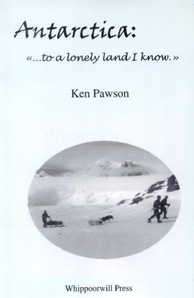Table of Contents
*
Featured Inuit Dog Owner: Ove Nygaard
*
An Amazing Lead Dog: The Story of Tatra
*
A Mystic Reunion
*
Katan, the Greenland Pup
*
Oregon Dune Musher's Mail Run
*
High Arctic Mushing: Part II
*
Bibliography: Inuit Sled Dog Research
*
Video Review: Atanarjuat, The Fast Runner
*
Book Review: To a Lonely Land I Know
*
IMHO: Visibility
Navigating This
Site
Index of articles by subject
Index
of back issues by volume number
Search The
Fan Hitch
Articles
to download and print
Ordering
Ken MacRury's Thesis
Our
comprehensive list of resources
Talk
to The Fan
Hitch
The Fan Hitch
home page
ISDI
home page
Editor: Sue Hamilton
Webmaster: Mark Hamilton
Contents of The Fan Hitch Website and its publications are protected by international copyright laws. No photo, drawing or text may be reproduced in any form without written consent. Webmasters please note: written consent is necessary before linking this site to yours! Please forward requests to Sue Hamilton, 55 Town Line Rd., Harwinton, Connecticut 06791, USA or mail@thefanhitch.org

Antarctica:.... to a lonely land
I know
by Ken Pawson
reviewed by Cassandra Colt
Ken Pawson's account of his two-year-stint with FIDS (Falkland Islands Dependency Survey - later, the British Antarctic Survey) in the euphoric days following the end of World War II stands at the opposite end of the Antarctic literary spectrum from those coffee table tomes with their glossy photographs that have flooded the bookstores of late.
Antarctica:... to a lonely land I know is a quietly personal chronicle of a young ex-serviceman's dream of a lifetime as he embarks on a voyage which is as much self-discovery as it is exploration of an uninhabited land. We trace his progress through the nail-biting selection process to shipping out on the redoubtable John Biscoe and his subsequent voyage south. Flashes of typically English humor intersperse the often lyrical description of the landscape.
Life in the remote bases scattered over the Antarctic peninsula was never easy. Resupply was a game of chance and radio communications sporadic. Yet the camaraderie forged among the men as they went about their duties of collecting scientific data, traveling by dog sled over the impossible terrain, and preparing meals in the cramped huts was evidentially strong enough to endure for the rest of their lives. Ken Pawson gives us a picture of an era that was all too soon swept aside by technological advances.
The bond between these men and their Inuit Sled Dogs is a poignant reminder of how important these sturdy animals have been in the settlement of the other polar region by the Inuit, and how there, too, dog power has been replaced by fossil-fueled vehicles.
Ken Pawson vividly conveys - often through minute-by-minute, day-by-day description - what is was like to work the dogs up crevasse-strewn glaciers, or to wait out a blizzard, with the food supply rapidly diminishing. Excerpts from his journal illustrate how in such a situation the dramatic is often intermingled with mundane detail, as in: "blubber stove going only with difficulty outside - had to finish cooking inside on small one. Bill and I went along ridge to look at ice - lot of wind and drift, almost blizzard conditions at times. 10:15. - pressure unsteady around 29.9 in. Started a game of battleships."
Life at the bases was not all work or a struggle against the elements. There are moments of relaxation at festivities and birthdays, and amusing incidents by the dogs. The book is not all about young men dashing about and having fun. Tragedy in the form of two deaths in a hut fire, and another when a young man fell dead while hauling supplies forms a melancholic backdrop to what was otherwise an idyllic existence for many of the survey members.
The author's own black and white photographs, of the Box-Brownie variety, add a powerful visual aspect to the narrative. For readers wishing to have a first-hand account of life in Antarctica before (as the book's forward tells us) "the mass of scientists and tourists arrived", Ken Pawson's unpretentious Antarctica:... to a lonely land I know is an essential addition to any polar bookshelf.
Antarctica.... to a lonely land I know,by Ken Pawson; ISBN 0-9681675-1-9; 323 pp. (b&w photos); $28 Cdn, $22 US, £15UK; available from Whippoorwill Press, Box 206, Inwood MB R0C 1P0 Canada, or your favorite bookstore.